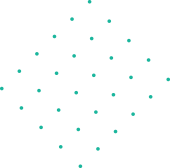Python is a high-level programming language known for its simplicity, versatility, and readability. It has gained immense popularity in various fields such as software development, web development, data science, artificial intelligence, machine learning, and more. In this article, we will delve into the key aspects of Python and its relevance in the modern tech landscape. Explore the Best Python training institute in Hyderabad, from Coding Masters by Subba Raju Sir.
Best Python training institute in Hyderabad
-
Introduction to Python:
- It is an interpreted, object-oriented programming language developed by Guido van Rossum in the late 1980s. It emphasizes code readability and a clean syntax, making it accessible for beginners and experienced developers alike.
-
Versatility and Applications:
- Python’s versatility allows it to be used for a wide range of applications, including:
- Web Development: Frameworks like Django and Flask for building dynamic web applications.
- Data Science: Libraries like NumPy, pandas, and sci-kit-learn for data manipulation, analysis, and machine learning.
- Artificial Intelligence: TensorFlow, PyTorch, and Keras for deep learning and neural networks.
- Automation: Scripting tasks, system administration, and workflow automation.
- Scientific Computing: Simulation, modeling, and numerical computations.
- Game Development: Pygame and Unity integration for game programming.
- Python’s versatility allows it to be used for a wide range of applications, including:
-
Key Features of Python:
- Readability: Python’s syntax uses indentation and intuitive language constructs, enhancing code readability and maintainability.
- Dynamically Typed: Python is dynamically typed, meaning variable types are inferred at runtime, reducing development time and complexity.
- Extensive Standard Library: Python comes with a rich standard library that provides ready-to-use modules for various tasks, reducing the need for external dependencies.
- Community and Ecosystem: Python has a vibrant community of developers, contributors, and libraries, fostering collaboration, support, and continuous improvement.
-
Python in Data Science and Machine Learning:
- It has become the de facto language for data science and machine learning due to its ease of use, powerful libraries, and robust ecosystem.
- Libraries like NumPy, pandas, matplotlib, and sci-kit-learn provide tools for data manipulation, analysis, visualization, and machine learning model development.
- Python’s integration with Jupyter Notebook facilitates interactive data exploration, experimentation, and documentation.
-
Conclusion:
- Python’s versatility, readability, extensive libraries, and community support make it a preferred choice for developers, data scientists, researchers, and businesses worldwide.
- As technology continues to evolve, Python remains at the forefront, driving innovation and powering solutions across diverse domains.
Also, Follow us on Linkedin


